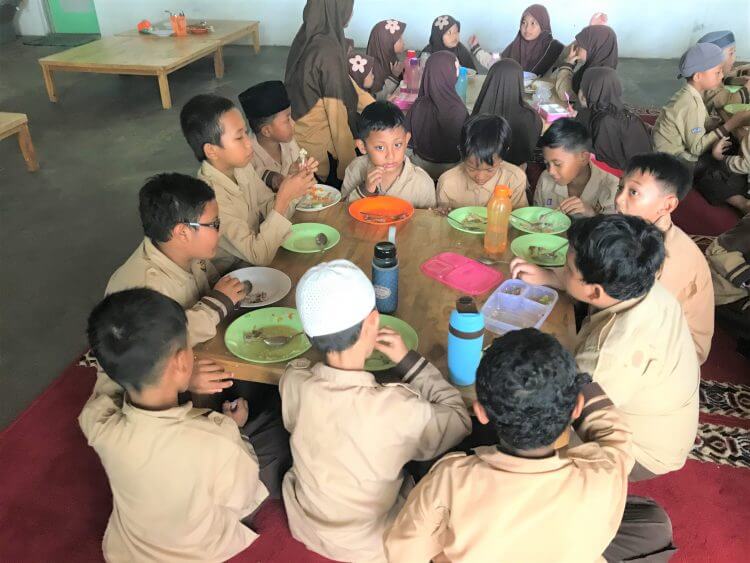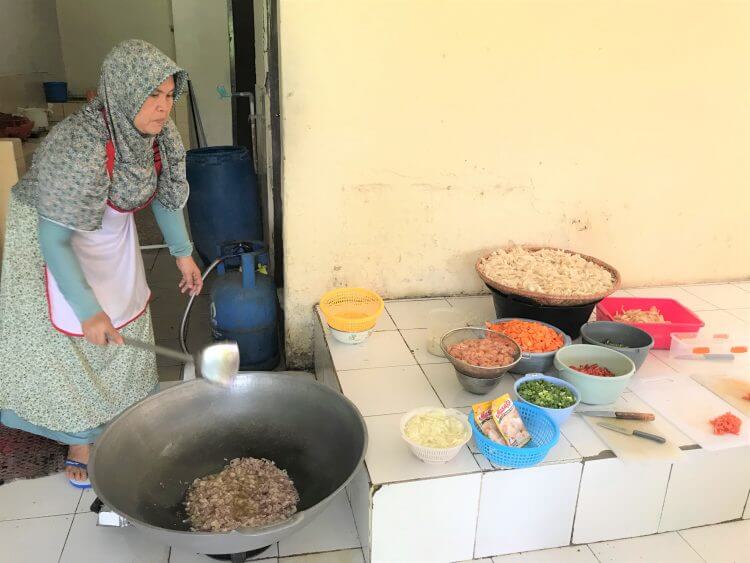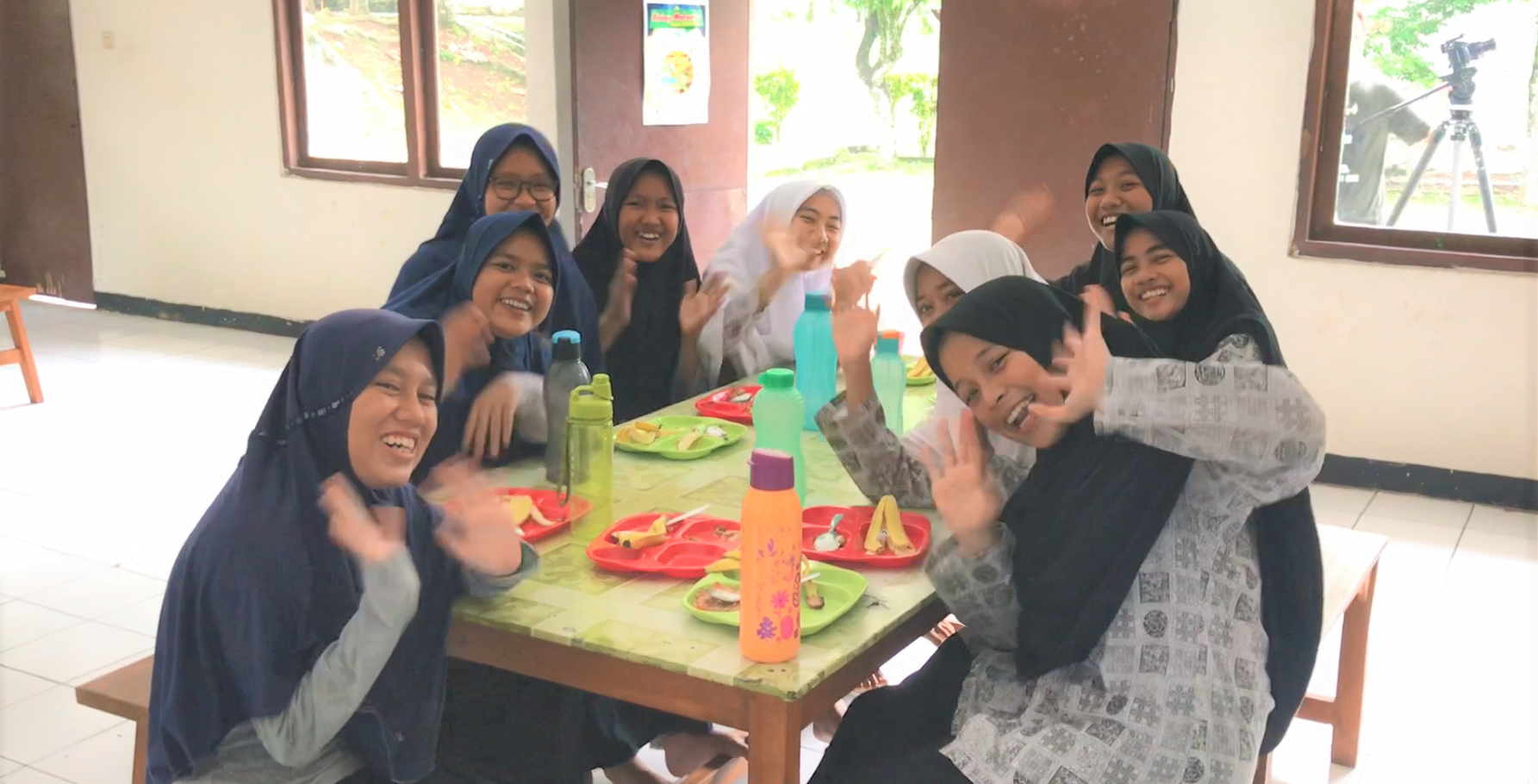School lunches may make you think of less than appetizing fare. But times are changing. Today schools may offer enticing menus designed by professional nutritionists, with servings of fruits, vegetables or salad alongside protein and carbohydrates. However, even in industrialized countries like Japan and the US, children from economically disadvantaged backgrounds often rely on school-provided meals to get the nutrition they need. When schools are closed, like over the summer holidays, families may struggle to fill the gap.
This issue is more acute in developing countries like Indonesia. According to research data from 2009 and 2013, nearly half of children there were undernourished and about one in four were anemic, conditions linked to poor physical and mental development. A 2016 study showed that roughly one in three children age 5–19 were underweight, with consumption of meat, vegetables, whole grains, and legumes well below average for the rest of Asia and the world. Diabetes is also a growing concern, with saturated fat and sugar intakes on a par with the high levels seen in the West, and about one in four boys and one in five girls either overweight or obese, according to the same study.
The challenge of child nutrition is even greater in the country’s 13,000 pesantren, an indigenous form of private education dating back to the sixteenth century where students live, eat and study together. Today pesantren serve some three million students, mainly from mid-to-low-income rural backgrounds. Dr. Rimbawan Rimbawan, a nutritionist at IPB University in Bogor, notes that pesantren “have received lower attention compared to public school in terms of health and nutrition programs” even though pesantren students are “highly susceptible to malnutrition.”
To tackle malnutrition, PT Ajinomoto Indonesia took a holistic approach. Partnering with IPB, the company initiated the School Lunch Program to provide well-balanced school lunches to students at two local pesantren on a trial basis, and to teach students and staff about proper nutrition, hygiene, and exercise. Indra Nurcahyo, in charge of PR for Ajinomoto in Indonesia, hopes the program will change eating behaviors and serve as a national model: “Our primarily goal is to show our achievement to other schools and involve the government so we can contribute to solving health issues.”


Before the first 13-month trial, the anemia rate among students in the program was 42.6%, 1.6 times the national average, and the typical lunch consisted of just rice and a side dish, with no fruit and little animal protein. The program featured nutritious meals prepared with seasonings provided by Ajinomoto Indonesia, such as “Masako®” and “Sajiku®” brand seasonings, using menus designed to appeal to local tastes. It succeeded in doubling students’ intake of energy, fat, protein, carbohydrates, iron and vitamin C, and in cutting anemia in half. During the second trial, school officials noted that students’ appetites increased, and children reported feeling healthier, less sleepy, and more energetic. “I learned a lot about the benefit of various foods, the consequences of under- and over-nourishment, and what recommended diets are,” reported one female student.
The School Lunch Program is an example of Ajinomoto Shared Value, an initiative helping to solve social issues and create economic value by contributing to the health and well-being of families in the region and around the world.
School Lunch Program in Indonesia

